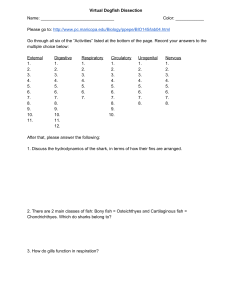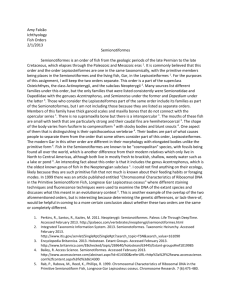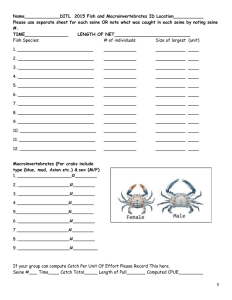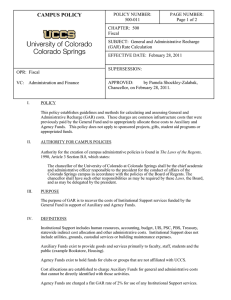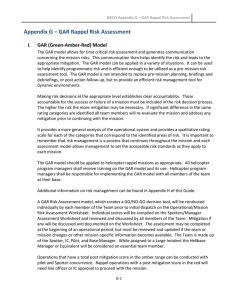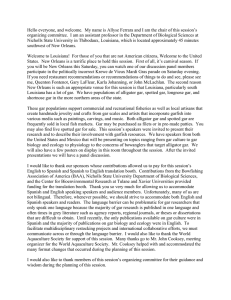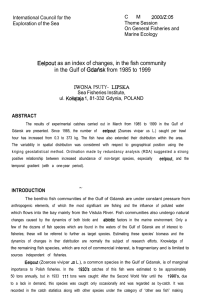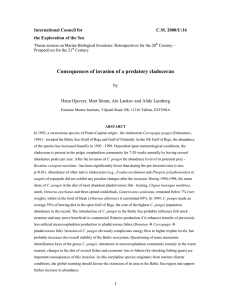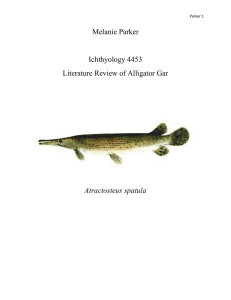Honors Marine Biology
advertisement
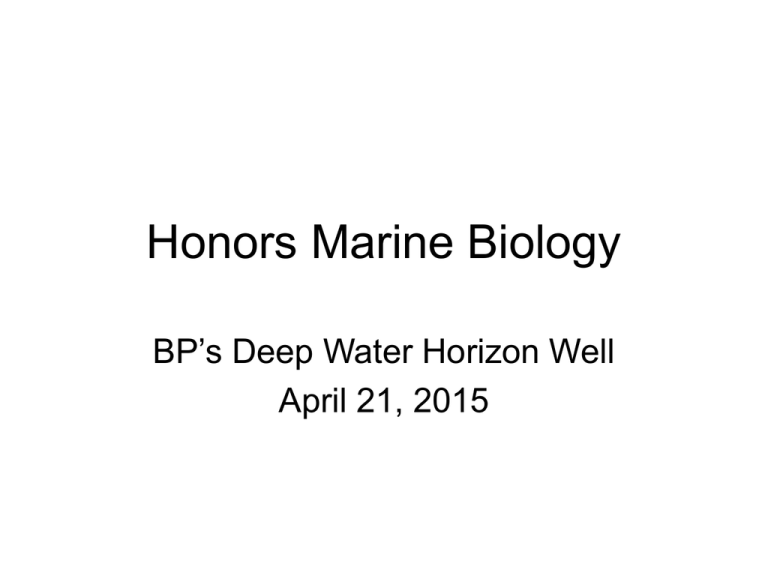
Honors Marine Biology BP’s Deep Water Horizon Well April 21, 2015 Sea Perch Challenge Next Week we will be meeting at Mrs. Bower’s home: 5331 Cork Oak St. Sarasota, FL 34232 Take Bee Ridge, turn right on Honore Ave; Turn right on Cork Oak Street, Bower’s home is 4 house on left. Class Challenge Arm Wrestling Class Quiz # 25 April 21, 2015 Question 1 The food sources from the sea are: 1. 2. 3. Question #2 What is consistently the highest yield? Question 3 The two primary sea production areas are found where ________________ Occurs and where there are wide _________________ shelf areas. Question 4 Name two kinds of fishing boats: Question 5 Name four common methods of capture Used by fisheries: Question 1 The food sources from the sea are: 1. Fin fish 2. Shellfish: Shrimp, crabs, clams and Oysters 3. Seaweeds Question 2 What is consistently the highest yield? Marine Fish Question 3 The two primary sea production areas are found where upwelling occurs and where there are wide continental shelf areas. Question 4 Name two kinds of fishing boats: 1. Shrimp trawler 2. Purse Seine Question 5 Name four common methods of capture Used by fisheries: 1. Purse Seine 2. Trawl 3. Longline 4. Gill Net BP Deep Water Horizon Well Five Years Later April 20, 2015, Methane gas blew out from a wellhead a mile below the Gulf of Mexico. At a Pressure 150 times greater than air at the Earth’s surface, the gas shot up through a drilling riser to the Deepwater Horizon oil platform and platform and exploded, killing 11 workers. 2 Days later the burning rig sank, It was the worst offshore oil spill in history. It continued to gush oil for 87 days, spilling 200 million gallons of crude spilling crude oil in a four-dimension disaster that reached from the Gulf’s floor to the its surface, and its seashore. What happened to the Oil? Some of it was burned off, some of it was skimmed up and also applied chemical dispersants used to break up some of it so that it would either dissipate, become soluble or be small enough for microbes to eat. But 5 years later, up to 10 percent remains in marshes and anywhere from 3 to 30 percent – though 10 percent is probably a good estimate – is on the ocean floor. BP is drilling two relief wells, which will permanently intersect with the damaged well and shut down the flow of oil into the Gulf of Mexico by pumping concrete into it. Dissection: Gar Fish Draw Specimen : Length: Sex: Age: April 21, 2015 Gar Fish Dissection Gar bodies are elongated, heavily armored with ganoid scales, and fronted by similarly elongated jaws filled with long, sharp teeth. Their tails are heterocercal, and the dorsal fins are close to the tail. As their vascularised swim bladders can function as lungs, most gars surface periodically to take a gulp of air, doing so more frequently in stagnant or warm water when the concentration of oxygen in the water is low. They also appear to surface in fast-moving rapids. As a result, they are extremely hardy and able to tolerate conditions that would kill most other fish. Homework Finish reading Module 15 Ocean Resources Complete OYO’s Complete Study Guide Take all Module tests through Module 15

